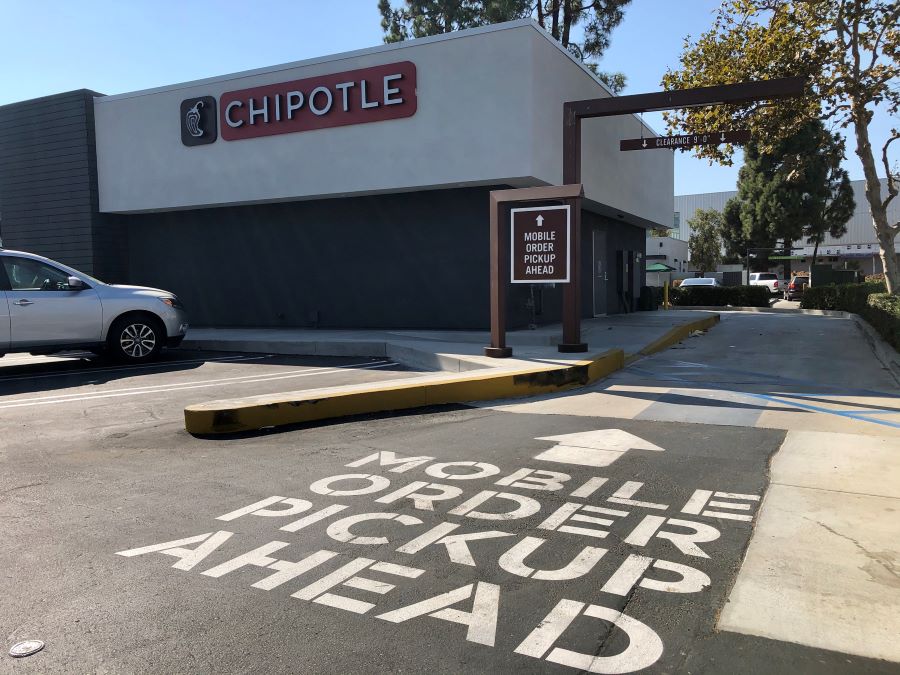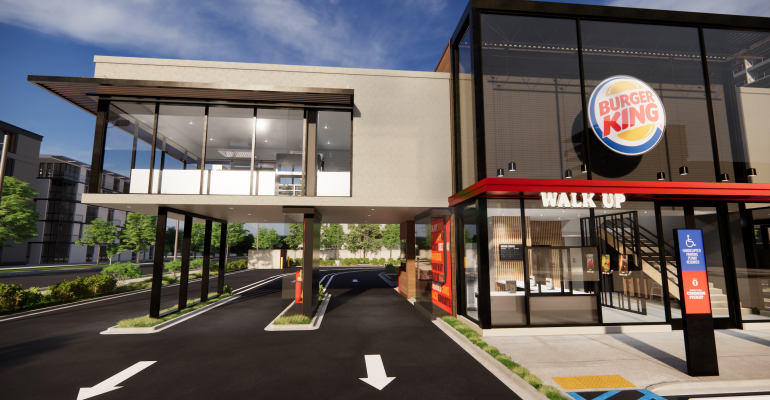Drive-thru lanes have been around for decades, popularized by the car culture of Southern California — the birthplace of iconic quick-service brands such as McDonald’s, In-N-Out Burger and Carl’s Jr.
Early iterations of drive-up or drive-thru ordering lanes include a single lane with a two-way speaker or parking stalls manned by roller skating carhops. For decades, drive-thru lanes have been the main driver of sales at fast-food chains, generating anywhere from 60% to 70% of sales.
Yet, up until the past year, innovation at the drive-thru has been largely scarce. But that’s about to change as McDonald’s, Taco Bell, Chipotle Mexican Grill, Shake Shake and Burger King are developing modern drive-thru lanes to fit the needs of today's consumer.
One of the biggest developments: the rise of car lanes dedicated for mobile pick up orders — a pre-pandemic trend that has accelerated due to the coronavirus crisis, according to Lisa van Kesteren, CEO of SeeLevel HX.
“Drive thru and mobile are here to stay,” van Kesteren told Nation’s Restaurant News in an interview prior to the company releasing its annual QSR Drive-Thru Study.
The pandemic is fueling the rise of drive-thru lanes designed for mobile order/pickup like this Chipotlane in Southern California. 
Before the pandemic, fast-casual chains like Chipotle Mexican Grill and Noodles & Company began testing contact free pickup from car lanes. Unlike traditional drive-thru lanes, the orders are made ahead of time through a brand’s digital channels, saving on wait times, or how long it takes to order after getting in line.
These lanes have performed well for Chipotle, which has about 100 Chipotlanes open. At the peak of the pandemic, the Newport Beach, Calif.-based said it planned to accelerate its growth of Chipotlanes because orders from these channels are also more profitable. Chipotlanes are expected to be included in more than 60% of new Chipotle restaurants.
Potential landlords, previously skeptical about Chipotlanes, are now more flexible about these types of restaurants.
Limited service restaurants are taking notice.
Taco Bell announced plans in August to open smaller footprint stores that cater to on-the-go consumers looking for double drive-thrus and curbside pickup.
In September, Burger King unveiled two new “Restaurant of Tomorrow” designs that cater to COVID trends. The prototypes provide as many as three drive-thru lanes, curbside pickup, lockers for mobile and delivery orders and walkup options for carryout orders.
New York City-based Shake Shack has created a new format store called Shack Track. The restaurants, either new builds or modified stores, will have drive-thru lanes and/or walk-up windows. Shake Shack plans to convert about 8 to 10 existing stores into Shack Tracks over the next few months. The first conversion occurred recently at a downtown Los Angeles location, which was modified with a walk-up window. The company is also adding curbside pickup options.
SeeLevel’s van Kesteren said the way chains look at drive-thrus is changing due to COVID. When jurisdictions closed dining rooms to curb the spread of the novel coronavirus in March, drive-thrus became a key ordering channel. Brands also directed customers to use drive-thru lanes to pick up mobile orders, which complicated matters over the last six months and led to stalled speed of service times.
That’s why brands like Taco Bell and Burger King are rethinking how they use drive-thrus in the future.
“I would not be surprised to see them adding a second kitchen and maybe having a different drive through lines” for mobile orders, she said.
Van Kesteren will be discussing the findings in the latest QSR Drive Thru Study at NRN's digital conference Restaurants Rise powered by MUFSO, which kicks off Tuesday. Her session is at 1 p.m. Eastern Thursday, Oct. 8.
Contact Nancy Luna at [email protected]
Follow her on Twitter: @fastfoodmaven

